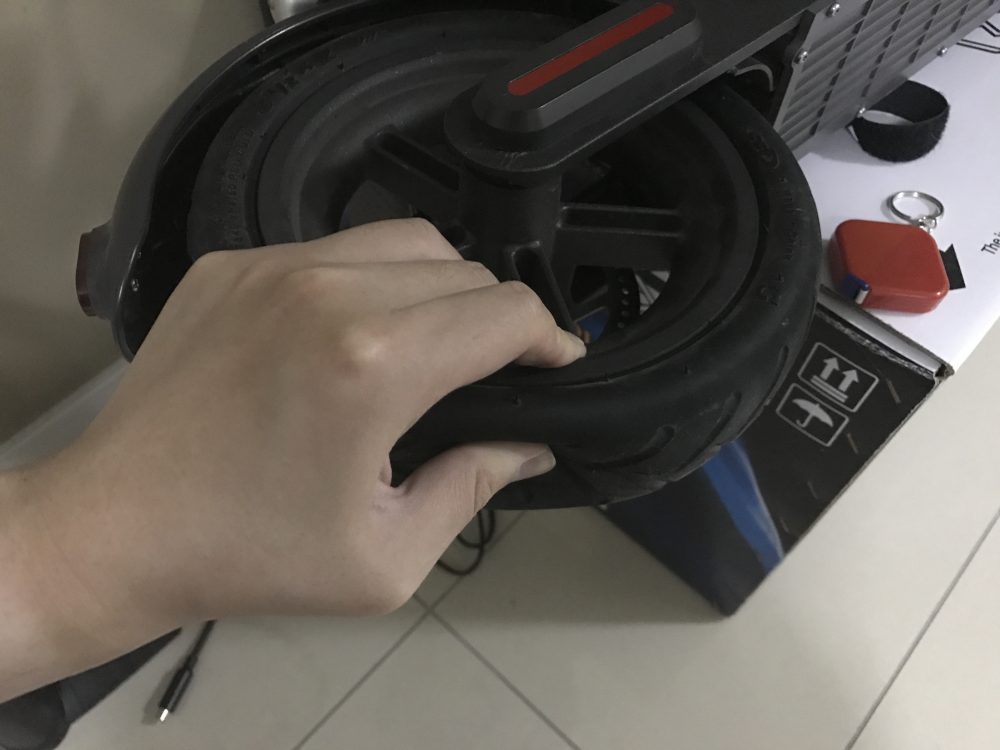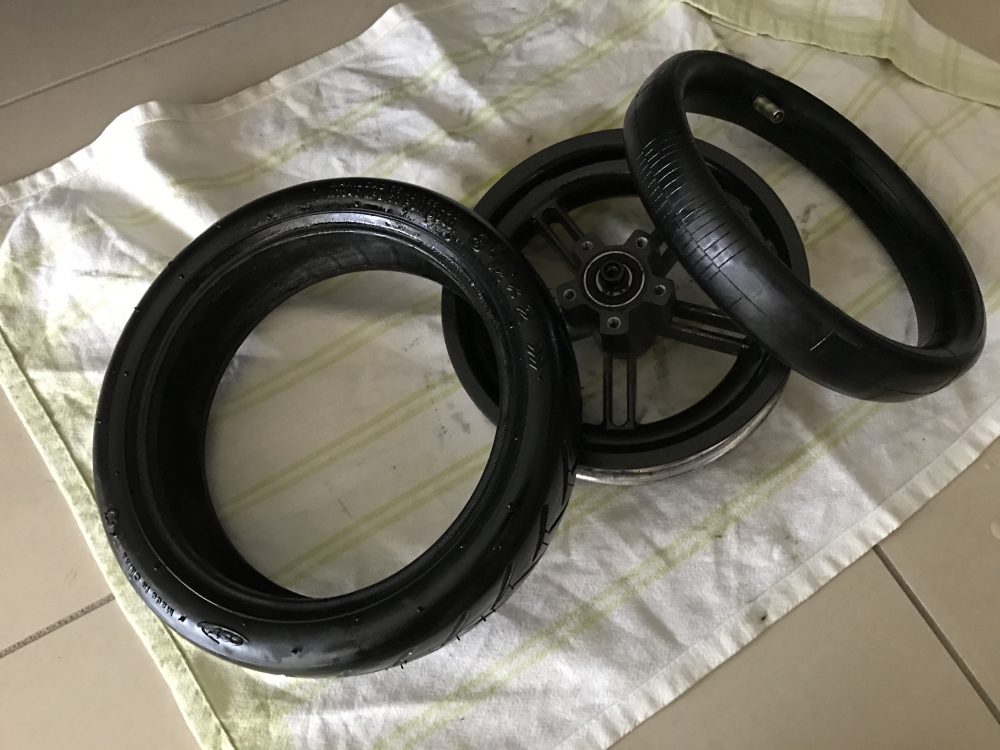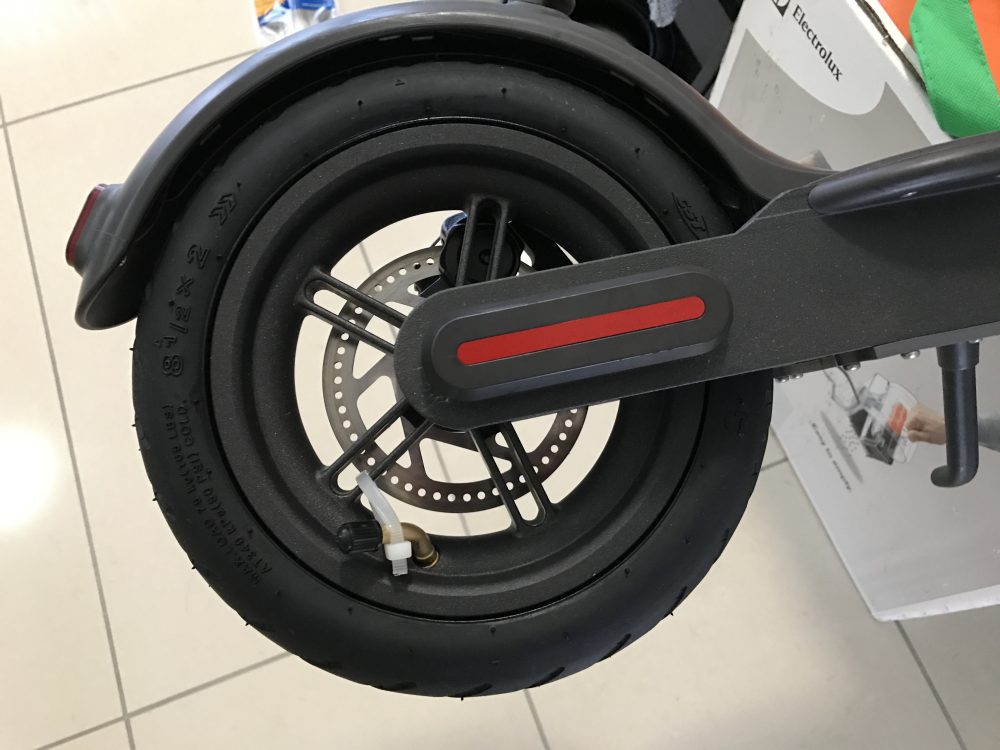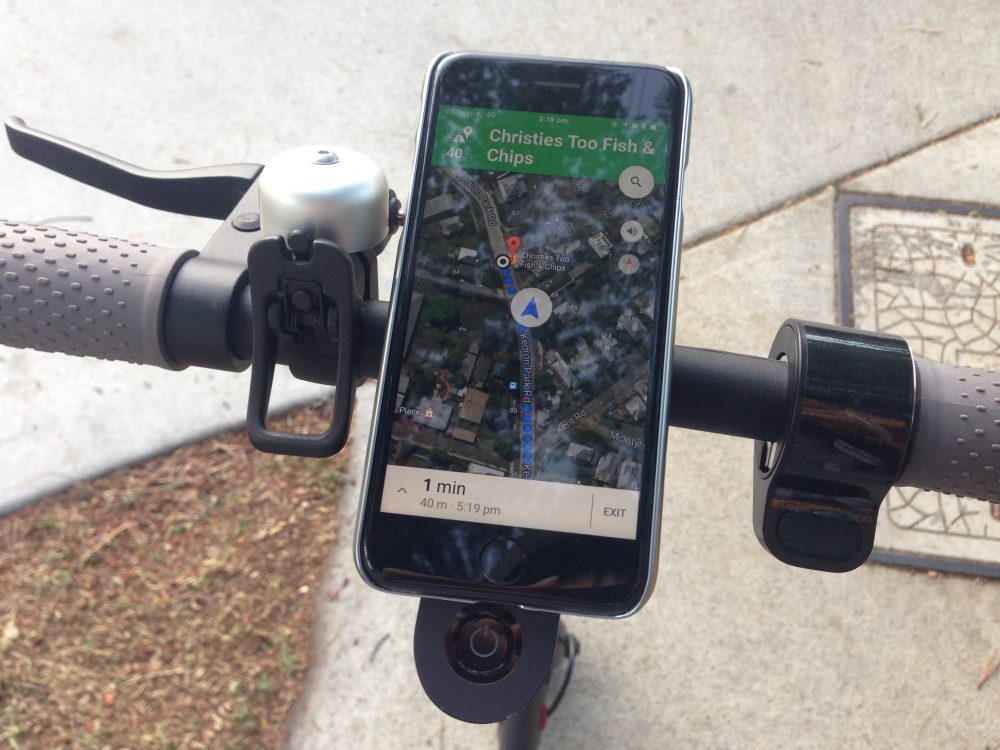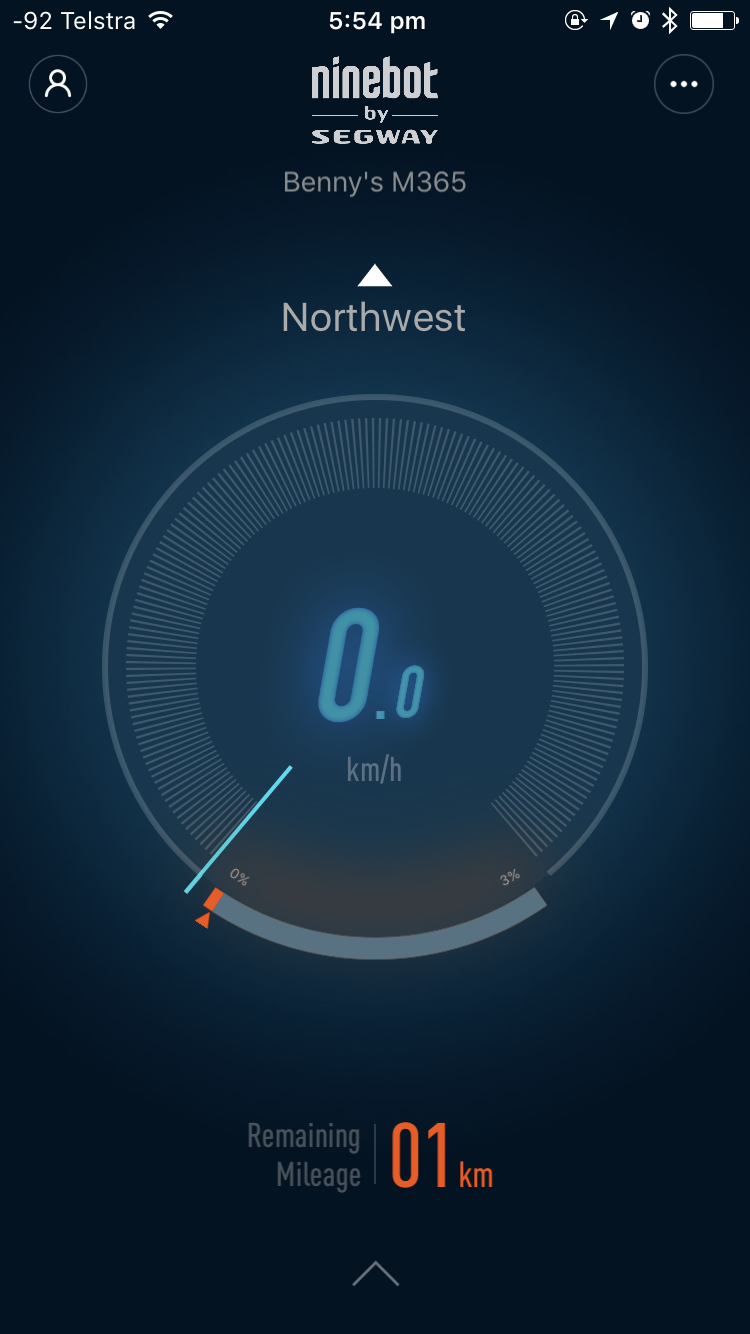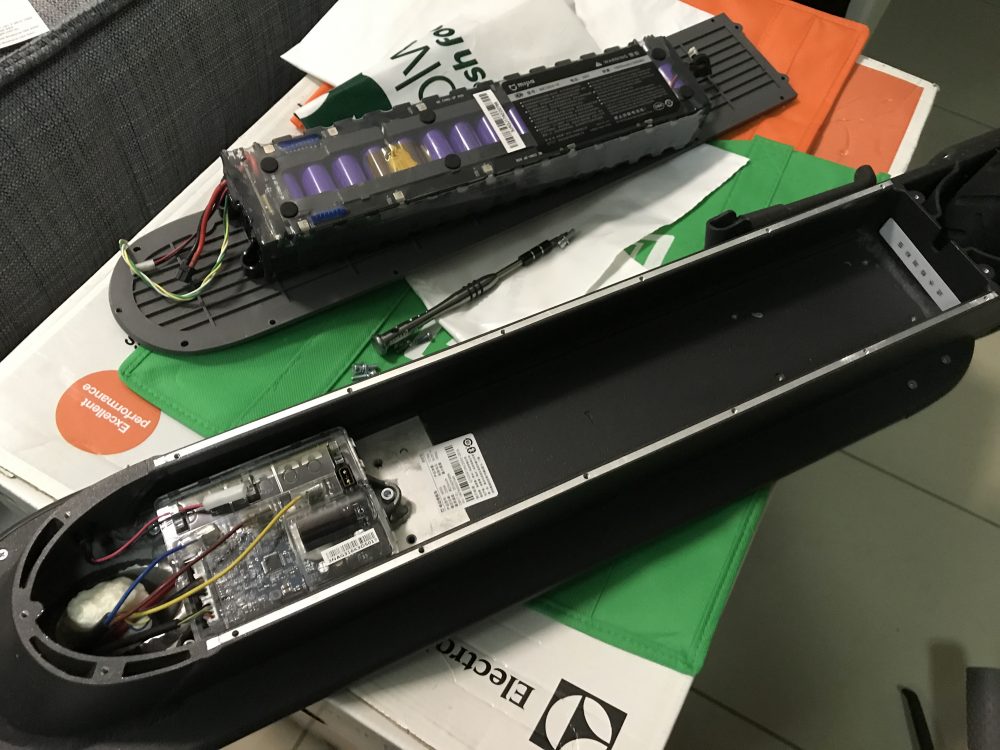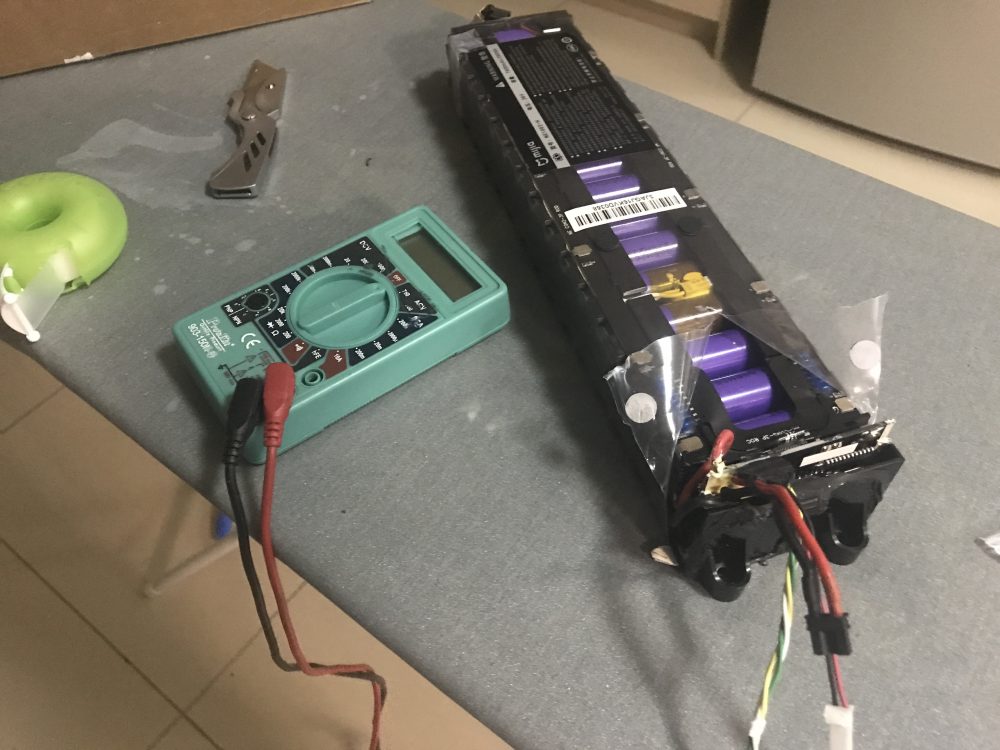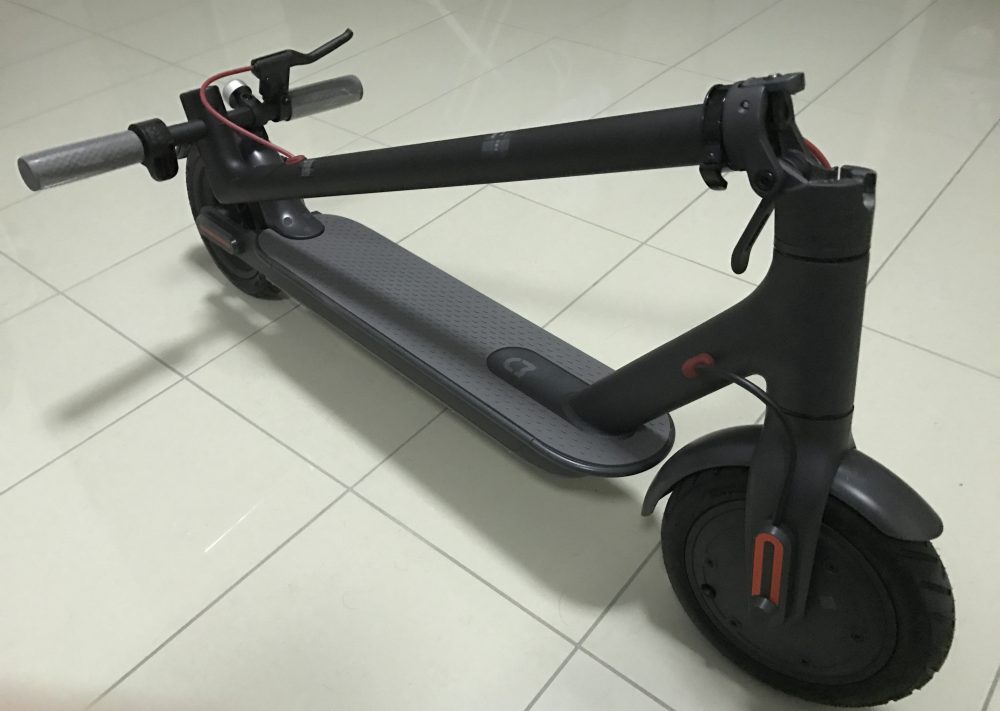This post is part two of my experience with the Xiaomi M365 electric scooter. Reading part one is recommended, but not necessary.
As much as I enjoy scooting around on the Xiaomi M365 electric scooter, I find it very difficult to recommend to someone who wants to pick up something for personal transport. Some of it has to do with quality control, some of it has to do with design flaws, but ultimately, the reliability just wasn’t there for the model/revision I purchased back in January 2017 (more on this later).
It’s February, 2017. I’m barely a few weeks into electric scooter ownership, a total of 70KMs on the clock, when I scoot right into my first show-stopping issue: a flat rear tyre. At first I have no idea what’s wrong. I’m minding my own business, enjoying the joys of personal transport and riding along, when suddenly the back feels sluggish. It isn’t until I get home that I realise that the rear tyre is looking a little flat. I don’t even own a bike pump, so I can’t see what the issue might be.
A quick trip to the local bike shop and I now own a bike pump. But there’s more bad news: while the tyre inflates, as soon as I inflate it to a certain point, it deflates again. Kinda weird. I’m no mechanic, but at this point I’m thinking it’s the inner tube — there’s no signs of a puncture or any other kind of damage on the rear tyre itself, so it must be the inner tube, right?
I get no help from the place of purchase (unless you’re counting “take it to the local scooter repair place” as help), so I pick up a few inner tubes I think will fit from Ali Express. A few tyres, while I’m at it, just in case. A few weeks go by; shipping from China is slow, and I am impatient. I set aside a weekend to do the deed, and following an afternoon of the ugliest work I’ve ever done, I get the rear wheel of the scooter, the tyre off the wheel, and replace the inner tube. The replacement valve sticks out a little more than the previous one, but it’s nothing that isn’t fixed by a cable tie.
My suspicions were right; some kind of split in the inner tube that only opened when it was filled with air was preventing it from inflating all the way. Probably a manufacturing defect, but we’re back in business, and that’s all that matters. And for a while, everything is great. I get a case for my iPhone and a little velco, and pretty soon I have my own on-board computer that I can use for navigation.
I’ve started noticing that the range indicator has become less and less inaccurate over time. Strangely, it doesn’t seem to affect my actual range – even with 0KM showing, I can still scoot along, just more slowly than normal. I pass it off as the battery needing calibration or something. Then it happens — with 100KMs on the clock, I run into my second show-stopping issue. One day, the scooter just stops turning on. And with no way to turn it on, there’s no way to charge the battery.
Unfortunately, things get a little complicated here as now electricity is involved, and I’m no electrical engineer. I open up the scooter anyway, and nothing seems particularly broken that would indicate a major fault with the battery. I get the retailer involved again, and this time they’re nice enough to send out a replacement battery. I discover the product page for the electric scooter now has a warning about only using 220V mains to charge the scooter that definitely wasn’t there when I purchased it back in January. I wonder why the warning was added, and theorise that the higher charging voltage has worn the battery down somehow. Nothing on the internet I can find indicates what kind of an effect higher input voltage would have on a universal power adapter (which definitely says it’s compatible with Australian 240V mains), so I can only speculate.
Weeks pass. While I’m waiting for a replacement battery to arrive, I find a French blog about the Xiaomi M365, including detailing issues about the battery and fuses. I discover that people other than myself have had issues with the battery; fuses that have failed, or faulty connections which mean the proper voltage isn’t provided to the electrics, which means the scooter doesn’t turn on. Hundreds of pages on a Spanish forum say that there’s a design flaw within the regenerative braking system which results in a fuse blowing if too much current is passed to the battery at a time, or when current is passed to the battery when it’s already full. There’s plenty of useful stuff there too, including all of the mods people have done to their scooter, but none of it is particularly helpful. I will point out the 149-page unofficial user’s guide PDF that they’ve put together for the scooter, featuring all kinds of information from people who have taken their scooters apart and put them back together again. It’s entirely in Spanish, but there’s enough photos that you should get a good idea of what you’re looking at.
At the end of May, the replacement battery arrives. It’s basically identical to the one I pull out of the scooter, with the important distinction that this one actually works. With a working battery in the scooter, I take apart the old battery and test it using instructions from the Spanish forum. It seems normal enough — the output is 42V, the fuse seems to be intact, so perhaps the battery cells themselves that are dead.
I take it pretty easy on the scooter for a few weeks, only riding it to and from the Valley on weekends for one of my weekly grocery runs. The thrill of riding the electric scooter is now tempered by the anxiety that this will battery will likely fail as well. I contemplate buying a voltage converter so I can charge the scooter using 220V. But a good quality one is about $200, and you can understand my hesitation on spending even more money on something that has already had so many issues with less than 200 KMs on the clock. For now, I’m just thankful that the scooter is back in the land of the living.
It’s September, and I’m riding the scooter into work on a bright Saturday morning. I brake to come to stop at a pedestrian crossing 200 metres from work, and while I’m almost stopped, I suddenly lose all braking power. I don’t notice something is wrong until the light turns green; I push off into the pedestrian crossing, press the accelerator, only for nothing to happen. I try pressing the power button in the middle of the road, but nothing happens. She’s dead, Jim, and I spend the rest of the 200m kicking my scooter along, and cursing the time I decided to buy an electric scooter.
By this time, you can probably understand I’ve had enough. The scooter doesn’t turn on, and frankly, I don’t care. It’s probably a blown fuse, thanks to the issue that decides to pass power to the battery when you’re braking. If I wanted to, I could probably swap the controller board from my old battery into the new battery, but I’m finding it hard to muster up the motivation to spend time and energy on a product that has already proven to be unreliable.
For what it’s worth, there’s speculation on the internet that later revisions of the M365, or versions with a certain firmware, have fixed the issue where the regenerative breaking will attempt to push more power to the battery than it can handle. As far as I’m aware, I was using the latest scooter and BMS firmware available, and still managed to (probably) blow a fuse on my battery, so I’m not sure how much stock you can put in that speculation. It’s also possible that I got a second dud battery, but the manufacturing dates on both batteries differ by about six months, so I’m not sure what else would have made a difference in terms of reliability. And plus, it was working fine for a few weeks, even if I was only riding it once or twice per week.
It was fun while it lasted, but maybe I’ll just suck it up and buy a bike next time. Or an electric skateboard – but that’s a story for another time.
